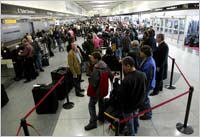Living the Guardian Ethos

Memorial Day means many things to the American people and to all of us who serve, or have family who serve in the armed forces. As we honor those who gave their lives for this country, we celebrate their service, selflessness, and heroism. For the Coast Guard, Memorial Day also marks the start of our busiest season, as 17 million recreational boaters kick off their summers on the water. It is also the time our role as “guardians” is most visible to the public.
Throughout the summer, we are engaged as “guardians” across the full spectrum of operations and missions. Our men and women stay busy 24/7 keeping boaters safe, protecting the maritime environment from pollutants, and preserving our fragile living marine resources. We prepare our service and our communities for hurricane season on the East, Gulf and Southern coasts. We patrol the Arctic as the winter ice recedes, and we maintain our vigilance in the Caribbean and along the Atlantic and Pacific coasts, keeping drug traffickers and migrant smugglers from reaching our shores.
At the same time, we keep our ports secure and commerce flowing safely and expediently around the world. In the midst of all these activities, our men and women are often transferring to new duty stations, training to maintain qualifications, or picking up the responsibilities of fellow crewmembers involved in this cycle of work and growth. We find ourselves acting as guardians to both our communities and our shipmates.
Recently, we’ve had a lot of discussion in the service about what it means to be a “guardian.” Memorial Day provides a rare moment to reflect on this role, before we launch into the throws of summer. A Coast Guardsman named Harry Hamlet, who served as our Commandant three quarters of a century ago, was one of the first to contemplate our ethos. Vice Admiral Hamlet penned the Creed of the United States Coast Guardsman, the words of his generation that expressed our service’s core values. The creed is a personal vow of character, specifically service, self-sacrifice, and courage. He also implored Coast Guard members to be model citizens in our communities and to possess a “cheerful and helpful demeanor.” His creed became the pledge of the men and women in the Coast Guard for generations to come.
During my tenure as Commandant, our senior enlisted leadership developed another pledge – what has been coined our "Guardian Ethos." It complements Admiral Hamlet’s creed. The Guardian Ethos defines who we are and is akin to a contract between members of the Coast Guard and the American people. Although in name and style, it matches the “Warrior Ethos,” it contains a few differences that shape our identity as a service. While both the pledges speak of serving and defending America, the “Guardian Ethos” goes on to say “I will save them. I am their Shield.” This is really the essence of the Coast Guard today, though it dates back to the days when the Coast Guard was the Steamboat Inspection Service, the Revenue Cutter Service, and the Life Saving and Lighthouse Services. We have a proud history of serving the nation and our communities in the maritime domain both in wartime and peace. And our core values remain focused on saving lives and protecting both people and the environment. We will always be America’s Maritime Guardian.
On this Memorial Day, as we honor the men and women who gallantly gave their lives for this nation, let’s pay homage to those living the Warrior and Guardian Ethos. Courageous and selfless young men and women within the Department of Homeland Security and in all of the armed forces serve with distinction throughout this country and around the world in countless ways. They keep America and Americans free and safe while making the world a better place for all of us. Their commitment, as well as that of their families, symbolizes the pride, strength and idealism of this great nation.
Admiral Thad W. Allen
Commandant U.S. Coast Guard
Labels: Coast Guard












